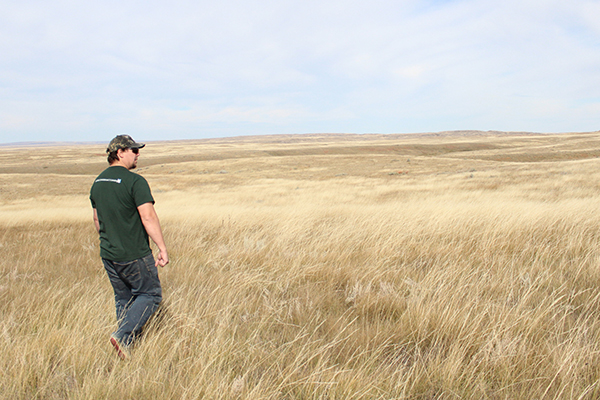A new conservation area has been unveiled adjacent to the Grasslands National Park, with the over 3,000 acre project dedicated to conserving wildlife habitat and preserving native grasslands in the Southwest.
The Wideview Complex, a 1,222 hectare (3,021 acre) project, combines a number of recently acquired parcels of property by the Nature Conservancy of Canada and their partners. The major new conservation area is located in the Milk River Basin, approximately 30 kilometres southwest of Mankota.
In unveiling the project, Nature Conservancy of Canada representatives note the Milk River Basin provides important habitat for a number of species registered under the federal Species at Risk Act. Birds including Sprague’s pipit, ferruginous hawk, and chestnut-collared longspur (all threatened) can be found at Wideview. The northern leopard frog, of which the Western boreal and prairie populations are of special concern, are found in the area. Other species at risk known to live in the Milk River Basin include the endangered burrowing owl, the endangered greater sage-grouse and threatened swift fox.
The Wideview conservation project is a success because of the generous financial support of a number of partners. The Government of Canada is a major contributor through the Habitat Stewardship Program, and through the Natural Areas Conservation Program, a public-private partnership to accelerate conservation. Other private and individual contributors have also dedicated funds to the project.
“This conservation area is an excellent example of how the Government of Saskatchewan’s Fish and Wildlife Development Fund can be used to support Nature Conservancy Canada’s conservation efforts. The Wideview Complex in the Milk River Basin is going to conserve habitat for many important grassland species including species at risk, and will add to existing habitat in the grasslands region already protected by crown land easements and provided by many Saskatchewan ranchers,” stated Saskatchewan Environment Minister Scott Moe.
“Southwest Saskatchewan has a special place in the hearts of the people of this province, and for good reason. The Milk River Basin is an area where ranchers have maintained a productive habitat for several species at risk for generations. The securement of the Wideview Complex means future generations will be able to continue to enjoy this area. People can head to the property to hike the rolling hills, and experience the beautiful views, plants and wildlife,” said Jennifer McKillop, Director of Conservation for the Nature Conservancy of Canada in Saskatchewan.






